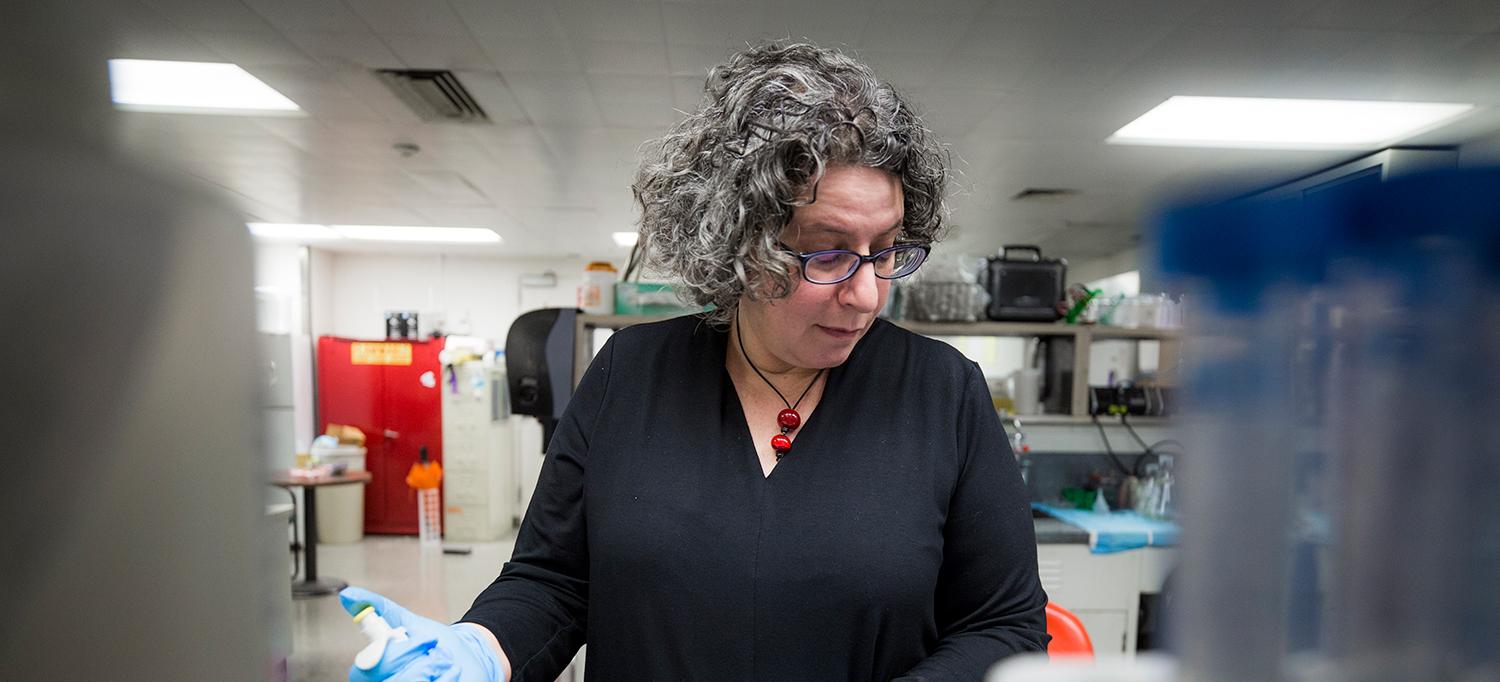
New research from Dr. Anna Nolan and team could lead to a metabolic test for early detection of lung damage in all victims of a disaster.
Photo: NYU Langone Staff
Abnormal levels of more than two dozen metabolites—chemicals produced in the body as it breaks down fats, proteins, and carbohydrates—reliably predicted which 9/11 firefighters developed lung disease and which did not, a new analysis shows.
NYU School of Medicine researchers say the results, published online on September 4 in the journal BMJ Open Respiratory Research, could lead to metabolic tests for early detection of lung damage in all disaster victims, not just 9/11 firefighters, exposed to fine particles from fire, smoke, and toxic chemicals.
The study, researchers say, offers the first evidence that metabolite blood tests conducted within months of the disaster could still help detect obstructive airway disease, or OAD. Such analysis could aid in diagnosing OAD in the roughly 9,000 firefighters exposed to toxic chemicals at the World Trade Center (WTC) on September 11, 2001, or during the cleanup that followed.
VIDEO: Dr. Anna Nolan comments on the study.
Senior study investigator Anna Nolan, MD, says the team hopes to develop a precise chemical profile of firefighters most at risk of developing OAD—including asthma, chronic bronchitis, or emphysema—by analyzing fluid samples from 9/11 firefighters not included in the current study.
Dr. Nolan, associate professor in the Department of Medicine at NYU Langone Health, says her team’s findings raise the possibility that correcting metabolic imbalances through dietary changes or food supplements could ward off or even reverse loss of lung function. Already, the team has plans to test a low-calorie Mediterranean diet, known for its ability to rebalance the body’s metabolites, for its potential effects on the firefighters’ lung health.
VIDEO: Three-dimensional analysis shows abnormal levels of some metabolites (seen here as colored dots) in 9/11 firefighters who developed lung disease. Images courtesy of BMJ Open Respiratory Research and George Crowley at NYU School of Medicine.
“Healthy lung function is essential for everyone, but especially firefighters, to carry out their work,” says Dr. Nolan. All firefighters, including those exposed to toxic chemicals on or after September 11, are routinely monitored through annual physical and medical exams. “Decreases in their lungs’ strength to inhale or blow out air are a sign of respiratory ill health,” she says.
Dr. Nolan says previous research has shown that nearly 1 in 10 firefighters exposed to dust at the WTC site is showing signs of lung injury. She says the WTC dust was laden with dangerous heavy metals, such as chromium and mercury, in addition to powdered concrete and toxic fibrous glass, asbestos, and components of jet fuel. When firefighters inhaled some of the dust at the disaster site, she says, it amounted to a slow chemical burning of their lung tissue that, in turn, led to chronic inflammation and lung injury.
For the current study, led by co-investigators George Crowley and Sophia Kwon, DO, MPH, the NYU Langone team analyzed blood levels of 580 metabolites frequently found in the body. All samples came from 9/11 firefighters who were tested within seven months of the disaster and whose lung function has been tested annually ever since. Researchers matched 15 firefighters whose lung function had sharply declined by 2015 with 15 whose lung function had remained healthy despite similar levels of exposure to WTC dust. Advanced computer software was then used to analyze the large volume of metabolite data.
When researchers plotted all metabolites on graphs, changes in various chemical groups stood out as highly predictive of the majority of cases of OAD and lung injury:
- decreases in sphingolipids, such as sphingosine 1-phosphate, a fat that has previously been linked to higher rates of asthma and found to trigger inflammation;
- declines in branched-chain amino acids, the building blocks of proteins, including leucine and valine, whose supplementation has in previous research been shown to counter chronic obstructive pulmonary disease (COPD);
- increases in levels of stress hormones, especially vanillylmandelate, which may lead to elevated levels of fatty acids, potentially inducing inflammation.
Dr. Nolan says it is likely that metabolic imbalances contribute to the chronic inflammation that underlies most OAD and lung injury.
The study was funded by National Institutes of Health grants R01 HL119326, U01 OH011300, and contract number 200-2011-3978, as well as UL1 TR000038 and the Saperstein Scholars Fund.
Both Mr. Crowley and Dr. Kwon received American Thoracic Society abstract awards and scholarships for their research efforts.
Besides Dr. Nolan, Mr. Crowley, and Dr. Kwon, other NYU Langone investigators involved in this study are Syed Hissam Haider, MD; Erin Caraher, MS; Rachel Lam, BS; David St. Jules, PhD; and Mengling Liu, PhD. Additional research support was provided by David Prezant, MD, at Albert Einstein Medical College in Bronx, New York.
Media Inquiries
David March
212-404-3528
david.march@nyulangone.org

